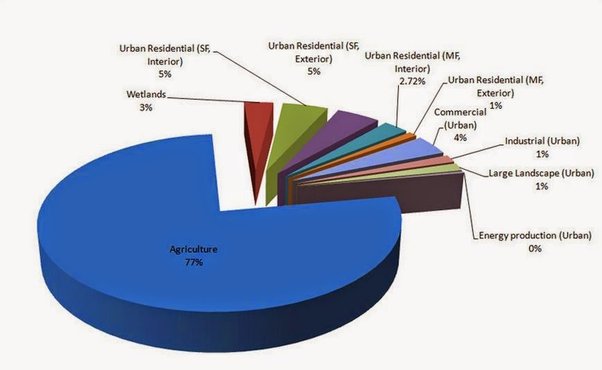
Rock Creek Awakens
How cooling are the gurgling sounds from a freshwater creek on a hot summer day! There was a time when you could enjoy drinking from iT without getting sick.
Of the seventy percent of the Earth covered with water, ninety-seven percent is salt water. Last week, a reader asked if I knew anything about desalinization. Though I know a little, her query inspired me to investigate further. Because I was involved in bringing the Blueback, a WWII submarine, to OMSi, I know that submarines have a distillation apparatus that heats and vaporizes seawater. When the salts are removed and the vapor is cooled, the condensation goes into a freshwater collecting tank. Submarines can produce 10,0000 to 40,000 gallons daily to cool electronic equipment and support the crew.
I also know that Israel has major desalinization plants that push saltwater through membranes with microscopic pores, leaving larger salt molecules behind. The drought of 2018 pushed the country to the edge, scorching the Fertile Crescent and forcing Israel to confront the shortage. The problem they had at first was with seawater microorganisms colonizing and blocking the pores, requiring costly, chemical-intensive cleaning. Researchers didn’t give up; designing a chemical-free system using porous lava stone to capture the microorganisms before reaching the membranes made the process more efficient and less expensive. Israel gets fifty-five percent of its domestic water from desalination and produces more water than it needs, inspiring other parched nations to do the same. Desalination costs one-third of what it did in the 1990s.
You might wonder why California doesn’t build desalinization plants on the Pacific coast and pump water inland. They have twelve that are very expensive to run, making it prohibitive to pump water to a state like Nevada without a shoreline. Like most environmental solutions, there are pros and cons to every possibility. The advantage is that it is possible to produce large amounts of potable water by removing salt and other minerals through reverse cosmos, thus increasing the water supply for drinking water, agricultural irrigation, and industrial needs. Desalinization provides independence from seasonal variations, a significant advantage in regions where availability fluctuates wildly.
Disadvantages start with the initial capital expenses for building the plants and the ongoing operational costs, which include significant energy consumption. Desalinization machines are expensive, with considerable continuing maintenance and energy costs. Until costs come down and the plants become more affordable, widespread adoption is unlikely, but that may change in the future.
Removing salt from water increases climate change concerns by contributing to a high carbon footprint since the process relies on fossil fuels. The chemicals used in the process can affect water quality, posing a health risk because of its high sodium content. Disposing minerals from seawater (brine) back into the ocean creates additional problems by elevating salt and chemicals harmful to marine life and disrupting the balance of aquatic ecosystems. Proper brine disposal management is crucial to minimize environmental impact.
California doesn’t have a shortage of water, but it does have a shortage of cheap water. The state uses an ancient system for water allocation, where some people get it for free while others have to pay. Most of their water is used for agriculture, and those ag users don’t pay market rates. Without subsidies, many types of farming wouldn’t be cost-effective. Yet, without modification, the subsidy and allocation program set up when show packs were historically high will create an ongoing crisis. Farms should be using drip irrigation that goes directly into the soil rather than getting absorbed in the air. According to the Public Policy Institute of California, up to a million acres of prime farmland may need to come out of production in the San Joaquin Valley. Almonds, alfalfa, dates, kiwis, rice, and cotton belong on the chopping block. Grain and other hay crops, turf farms, wheat, and sunflowers are the lowest uses, while vineyards, pistachios, olives, plums, prunes, and apricots are in the middle.

Water rights vary from state to state, with great differences between the eastern and western parts of the United States. In the East, they are uniformly riparian, while in the West, they are hybrid appropriations depending on complex ownership laws. Transferring ownership doesn’t guarantee that water rights will be attached. Based on English Common law, Riparian rights grant water rights to property owners “whose land physically touches a river, pond, or lake.” The right is transferred when the land is sold and remains valid even if the right is never exercised and the water isn’t used. Appropriative rights allocate water based on historical usage rather than land ownership. It is based on seniority and can be lost if not used regularly. Senior rights holders can use their allocation even if there isn’t enough leftover for junior rights holders. The system is tricky for states west of the Mississippi River and too complex to discuss here.
In all states, it’s wise to remember that purchasers are not just buying land but also water rights. Reading The Water Factor will provide a glimpse into current fights arising from antiquated laws in a world with over 8 billion people. Find out what is happening in your community and keep abreast of issues that deprive you of your right to clean, affordable water.
Purchase The Water Factor today. You won’t be sorry. On AMAZON
or Barnes and Noble. Soon to be in bookstores everywhere.

References:
Shook. (2023) What are the Advantages and Disadvantages of Desalination Plants? NE Water. Retrieved from https://www.newater.com/pros-and-cons-of-desalination-plants/#:~:text
Website (2016 ) Israel Proves the DesalinationEra is Here. Scientific America. Retrieved from https://www.scientificamerican.com/article/israel-proves-the-desalination-era-is-here/
Website (2024) Water Rights by State. AQUAOSO. Retrieved from https://aquaoso.com/water-rights/
Website (2024) How Submarines Work. How Stuff Works. Retrieved from https://science.howstuffworks.com/transport/engines-equipment/submarine2.htm#:~:text
